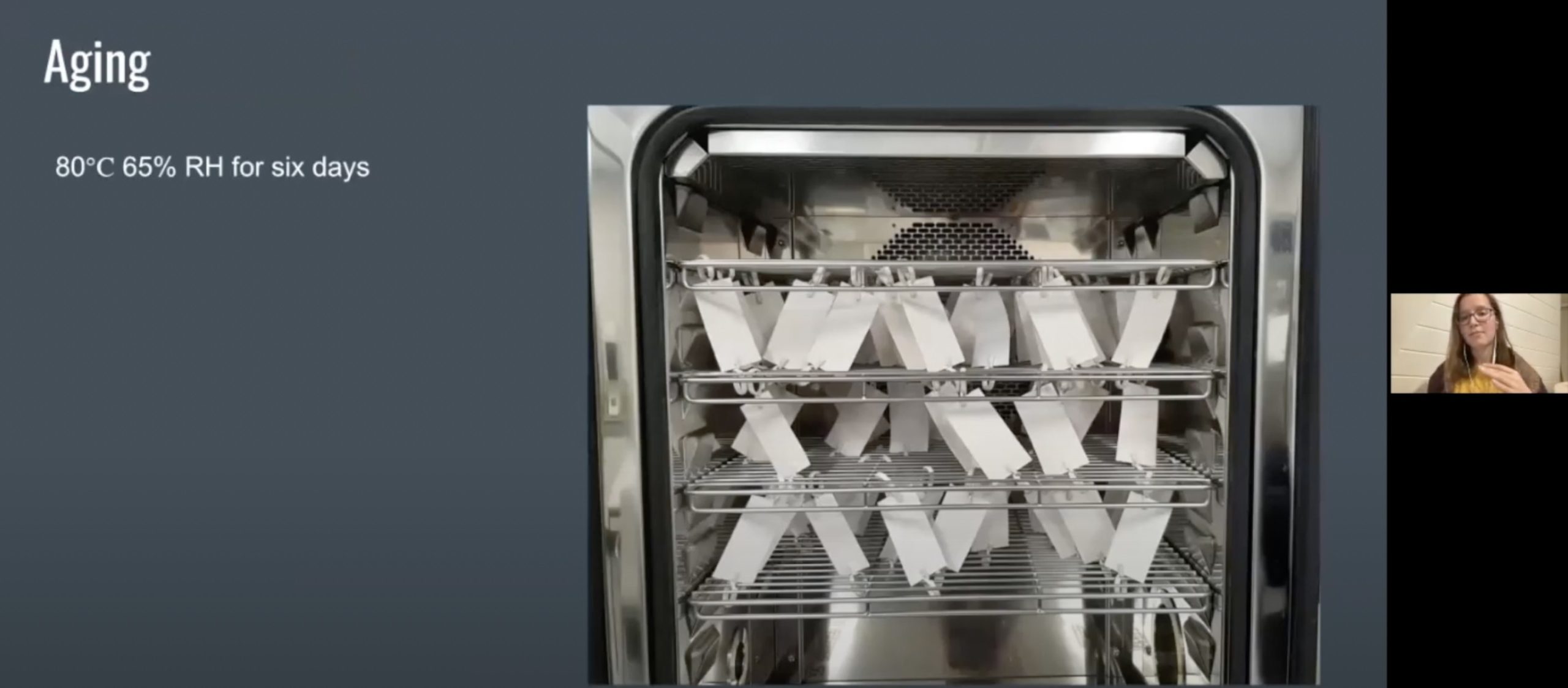Emerging Professionals Talks (March 3, 2022)
Presented by Williston Fund Recipient: Fenna Engelke, Trainee Conservator at the Universiteit van Amsterdam

From plastic clips to tape carriers – Optical Brightening Agents (OBAs) are all around us from mass-produced commercial products to unique fine art objects.
Fenna Engelke presented budding 2021 research into the transfer and aging of OBAs in local aqueous treatment. I particularly enjoyed Engelke’s openness to discuss as it is still early in the data analysis and observation phase of the research.
This experiment was borne out of necessary happenstance, during a routine aqueous tape removal treatment when OBAs transferred from a gum tape carrier to the object. While the transference was only visible in UV light, Fenna began to wonder what visual change could occur overtime at these fluorescent blue tide-lines. Out of curious need, Fenna designed a three-month experimental design of OBA aqueous transference and accelerated aging. This design aimed to answer the questions:
- “What are the consequences of local optical brightener movement into a paper without OBAs?”
- “Will this [OBA migration into the paper] cause discoloration in the future?”
Fenna began by referencing some current literature on OBAs, making clear that they are neither light- nor water-fast. A great reference was made to research by conservator Rachel Mustalish’s article “Optical Brighteners: History and Technology” that states the general stages of OBA degradation as “quenching”/omission of natural fluorescence, yellowing and darkening of the OBA, and eventual deterioration of the substrate. Fenna then continued to share the experimental design of aqueous experiments on several different paper substrates using “computer paper” as the source of leeching optical brighteners. By using several types of paper, Fenna was able to observe the varied movement of these water soluble brighteners. By maintaining separate groups of unaged and aged samples, Engelke was able to observe Mustalish’s proposed first step of “quenching”. Under UV light the aged optical tideline exhibited a deadening in fluorescence. There were two replicates where Fenna might have experienced described yellowing or darkening, but it is unclear. Engelke hopes to find an avenue to continue this research; to increase artificial aging duration and number of transference reps. By conducting those future experiments, she hopes she might observe all of the hypothesized stages of Optical Brightening Agent deterioration!

Meeting summary by: Tess Cramer
Attendance: approximately 60-70 participants
Venue: virtual